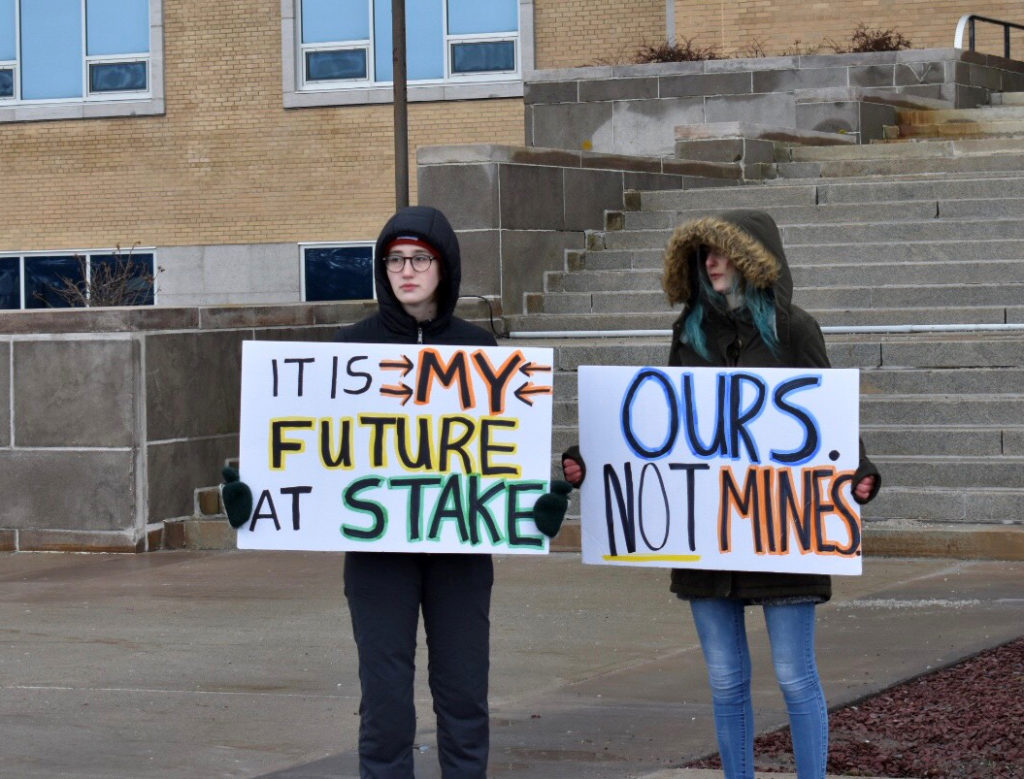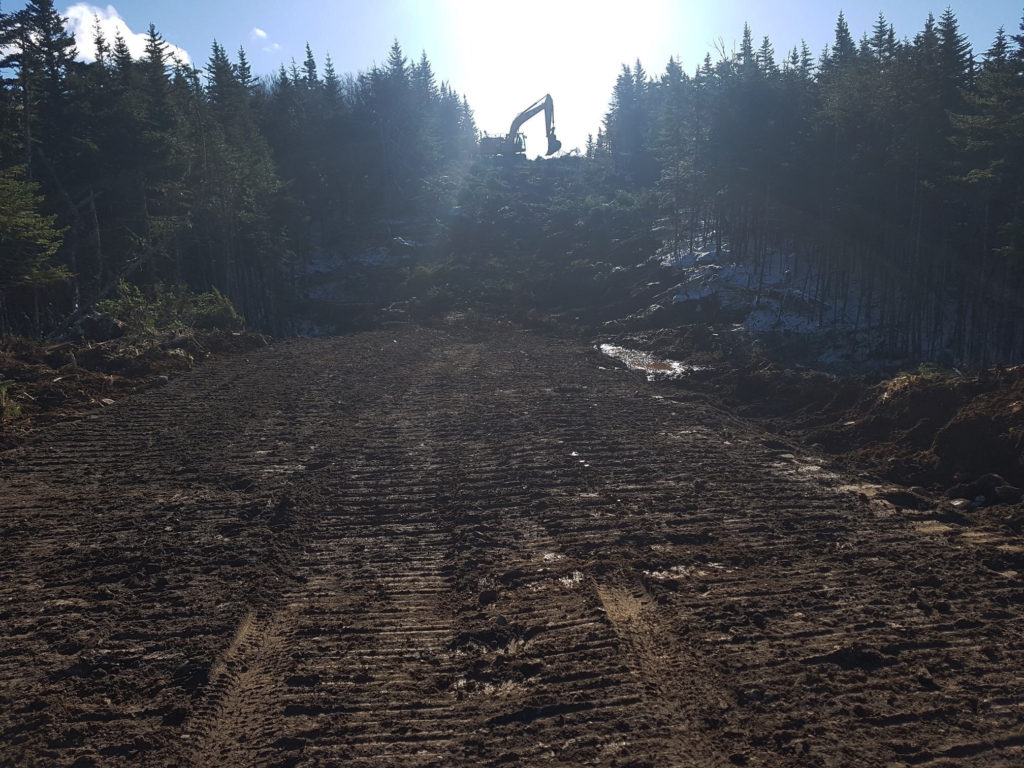Concerned locals brave cold to rally at the Confederation Building
Nick Travis
Kicker

ST. JOHN’S, N.L. – A crowd gathered Jan. 31 in front of the Confederation Building to protest a road being built to a proposed gold mining project on the Avalon Peninsula.
The Facebook group called “STOP the Eagleridge Gold Mine near the Avalon Wilderness” rallied in the hope of stopping this project from going forward.
The group is concerned a gold mine would harm the Salmonier Nature Park and the Avalon Wilderness area.
Mike Cooze, a representative of the group, said the protest was meant to let the public demand accountability from Eagleridge International Ltd, the mine’s proponent.
“Because if we don’t, we’ve just given them the green light to do it again, and again and again,” said Cooze
The group is outraged that Eagleridge has been able to avoid conducting a full environmental impact study (EIS) on an access road to the proposed gold mine site.
The access road was originally approved in 2014 by the former Progressive Conservative government, which excused Eagleridge from having to conduct an environmental impact study.
After it was elected in 2015, the Liberal government demanded that Eagleridge conduct environmental studies. However, Eagleridge challenged the Liberal government’s decision and successfully had it overturned in court last August.
Since then, the company has been able to continue building the road.
Eagleridge declined to comment on the protest or their lack of an EIS.

Project splitting?
Opponents of the gold mine are concerned that the 11-kilometre access road being built by Eagleridge is an example of project splitting – that is, a tactic whereby a company gets a small part of their project approved in order to make it easier for the rest to be approved in the future.
However, the government is adamant that the access road won’t be a short cut to full approval of the gold mine project.
“We have . . . reiterated that the environmental assessment regulations would require any subsequent development of the area, such as a mine, to undergo a separate environmental assessment,” said the Department of Municipal Affairs and Environment in a written release.
However, the protest group is concerned that steps have not been taken to protect the environment and that the project will result in the leaking of toxic chemicals used for mining of gold into nearby watersheds. They fear this leakage could contaminate the headwaters of both the North Arm River and the Salmonier River.
Often when mining gold, companies use sodium cyanide to separate gold from waste material.
According to a US geological survey, it would take less than five micrograms per litre of sodium cyanide to have an adverse effect on the swimming and reproduction of freshwater fish. At under 20 micrograms per litre, high mortality rates are documented in exposed fish.
Concerned locals
Jeff Ivany was one of the first people to protest the project.
“We’re going to bust this road in on its boundary and blast dynamite and have generators and that going in the background,” said Ivany. To me it makes zero sense.”
Aaron O’Brien, vice-president of the Canadian Parks and Wilderness Society, says the area is to be valued for reasons beyond its minerals.
“It’s valued for its natural wilderness qualities by canoers and hikers, and hunters and trouters, trappers. . . They all value it as well. They’ve been making use of it for many decades.”
Marina Owens, another protester at Confederation Building, suggested the mine would ruin a peaceful wilderness area.
“Unless you’ve been in there and heard the quiet, or the lack of noise, you don’t really appreciate what’s there and what the devastation could cause if this gold mine is developed,” said Owens.
According to the Department of Municipal Affairs and Environment, prior to any construction, Eagleridge International Ltd. is required to prepare what’s known as an EEM, or an environmental effects monitoring plan.
These EEMs will be used to monitor the effects of the road project on what the government calls VECs, or valued ecosystem components. These VECs include:
– Woodland caribou
– Aquatic ecosystems (including the headwaters of the Salmonier river) and aquatic species
– Lichen species of conservation concern.
The EEMs need to be approved by the minister of Municipal Affairs and Environment.
Although the future of the project is unclear, it’s clear that many protesters feel very strongly about this issue and are unlikely to give up just yet.
“It doesn’t make sense to establish a protected area if you’re only going to protect it when it’s convenient,” said Paul Holley, a member of the Green Party. “And, in this case, it’s less convenient to protect it because of the possibility of natural resource development.”




Be the first to comment